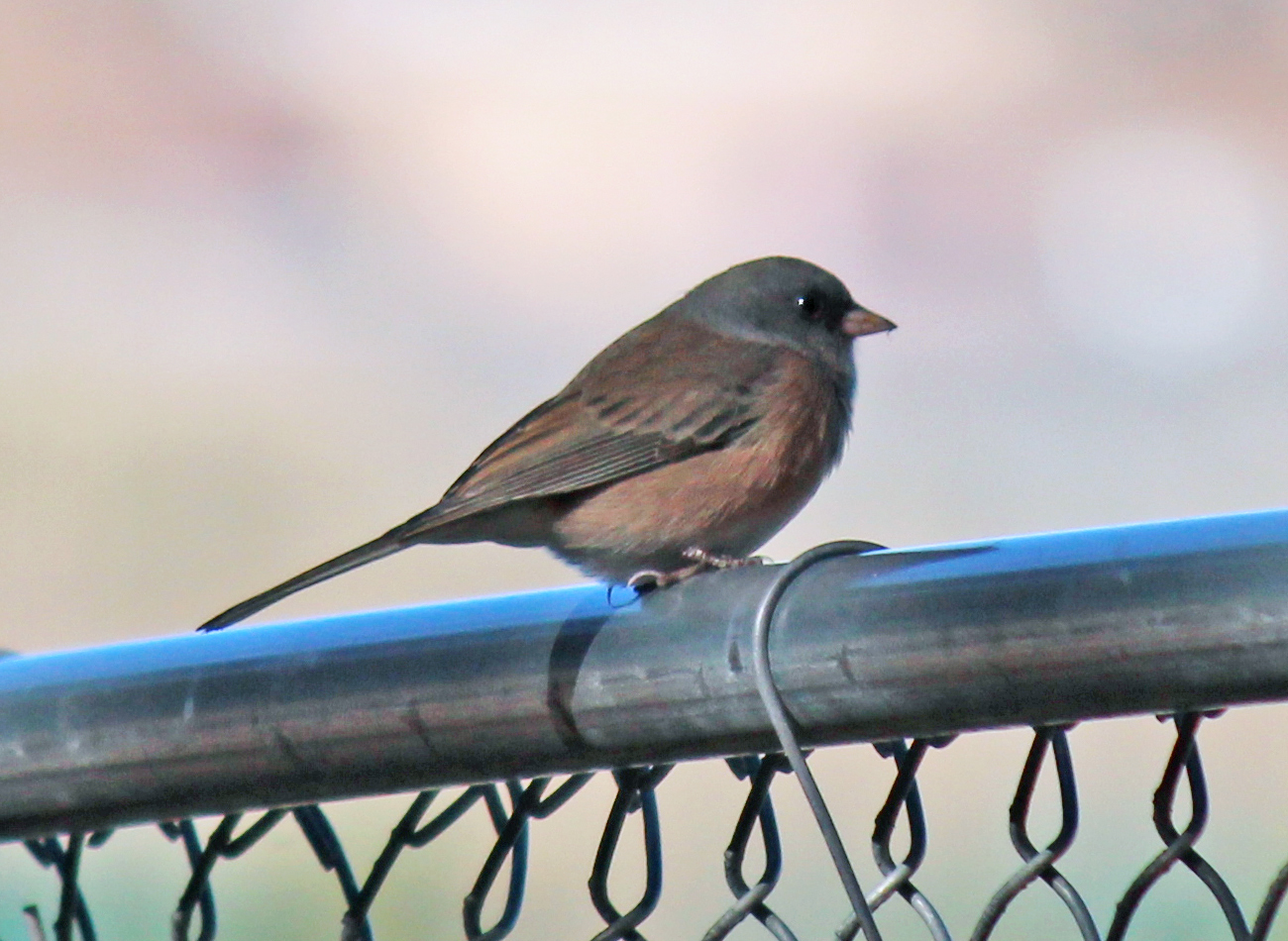junco on:
[Wikipedia]
[Google]
[Amazon]
 A junco (),
A junco (),
 A junco (),
A junco (), genus
Genus (; : genera ) is a taxonomic rank above species and below family (taxonomy), family as used in the biological classification of extant taxon, living and fossil organisms as well as Virus classification#ICTV classification, viruses. In bino ...
''Junco'', is a small North American bird in the New World sparrow family Passerellidae. Junco systematics
Systematics is the study of the diversification of living forms, both past and present, and the relationships among living things through time. Relationships are visualized as evolutionary trees (synonyms: phylogenetic trees, phylogenies). Phy ...
are still confusing after decades of research, with various authors accepting between three and twelve species
A species () is often defined as the largest group of organisms in which any two individuals of the appropriate sexes or mating types can produce fertile offspring, typically by sexual reproduction. It is the basic unit of Taxonomy (biology), ...
. Despite having a name that appears to derive from the Spanish term for the plant genus '' Juncus'' (rushes), these birds are seldom found among rush plants, which prefer wet ground, while juncos prefer dry soil.
Their breeding habitat is conifer
Conifers () are a group of conifer cone, cone-bearing Spermatophyte, seed plants, a subset of gymnosperms. Scientifically, they make up the phylum, division Pinophyta (), also known as Coniferophyta () or Coniferae. The division contains a sin ...
ous or mixed forest areas throughout North America, ranging from subarctic taiga
Taiga or tayga ( ; , ), also known as boreal forest or snow forest, is a biome characterized by coniferous forests consisting mostly of pines, spruces, and larches. The taiga, or boreal forest, is the world's largest land biome. In North A ...
to high-altitude mountain forests in Mexico and Central America south to Panama. Northern birds usually migrate farther south; southern populations are permanent residents or altitudinal migrants, moving only a short distance downslope to avoid severe winter weather in the mountains.
These birds forage on the ground. In winter, they often forage in flocks. They eat mainly insects and seeds. They usually nest in a well-hidden location on the ground or low in a shrub or tree.
Taxonomy
The genus ''Junco'' was introduced in 1831 by the German naturalistJohann Georg Wagler
Johann Georg Wagler (28 March 1800 – 23 August 1832) was a German herpetologist and ornithologist.
Wagler was assistant to Johann Baptist von Spix, and gave lectures in zoology at the Ludwig Maximilian University of Munich after it was moved t ...
for a single species, the yellow-eyed junco. The yellow-eyed junco is therefore now the type species
In International_Code_of_Zoological_Nomenclature, zoological nomenclature, a type species (''species typica'') is the species name with which the name of a genus or subgenus is considered to be permanently taxonomically associated, i.e., the spe ...
. The genus name is from Latin
Latin ( or ) is a classical language belonging to the Italic languages, Italic branch of the Indo-European languages. Latin was originally spoken by the Latins (Italic tribe), Latins in Latium (now known as Lazio), the lower Tiber area aroun ...
meaning 'rush'.
The genus contains five species:
References
External links
* * {{Taxonbar, from=Q857319 Bird genera American sparrows Birds of North America Taxa named by Johann Georg Wagler